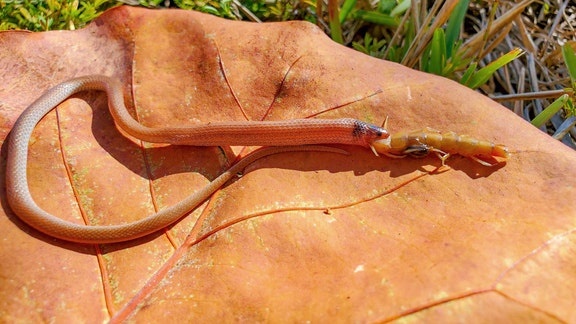The rarest snake in North America spotted earlier this year in Florida has died.
According to the Florida Fish and Wildlife Conservation Commission, the rim rock crowned snake died while trying to swallow a prey – a giant centipede about a third of the snake's length.
Researchers said they believe the size of the centipede cut off the snake's air supply at its widest part. Its venomous pincers attacked the inside of the snake, causing internal bleeding.
“I was amazed when I first saw the photos,” Coleman Sheehy, the Florida Museum’s herpetology collection manager and author of the study said in a press release. “It’s extremely rare to find specimens that died while eating prey, and given how rare this species is, I would never have predicted finding something like this. We were all totally flabbergasted.”
Scientists opted for CT scans instead of dissection to keep the snake as intact as possible for further study on the elusive species.
“We were able to perform a digital autopsy, which allowed us to examine the centipede and snake, including its injuries and gut contents, without ever picking up a scalpel,” Jaimi Gray, another of the researchers, said.
The rim rock crowned snake, or Tantilla oolitica, is one of several species of plants and animals that only exists from central Florida to the Keys along an ancient coral reef, according to the FWC.
“We can’t say for sure whether or not they’re still present in peninsular Florida,” Sheehy said. “Absence of evidence is not evidence of absence, but their habitat has basically been destroyed.”
Rim rock crowned snakes are tiny reptiles which can grow to less than a foot in length. They have black to light brown heads called crowns and are only found in a very small part of southeast Florida and the Florida Keys.
As cities expanded, the snakes’ numbers dropped. According to FWC, hurricanes and thunderstorms also flood their habitat, which is mostly underground in limestone. They can sometimes be found above ground in rotten logs or hiding under rocks or trash.
The Florida Museum has only cataloged 26 rim rock crowned snakes.
In the wild, life expectancy is about five years. After two years, the snake lays about six eggs per year, according to the FWC.

Comments
Post a Comment